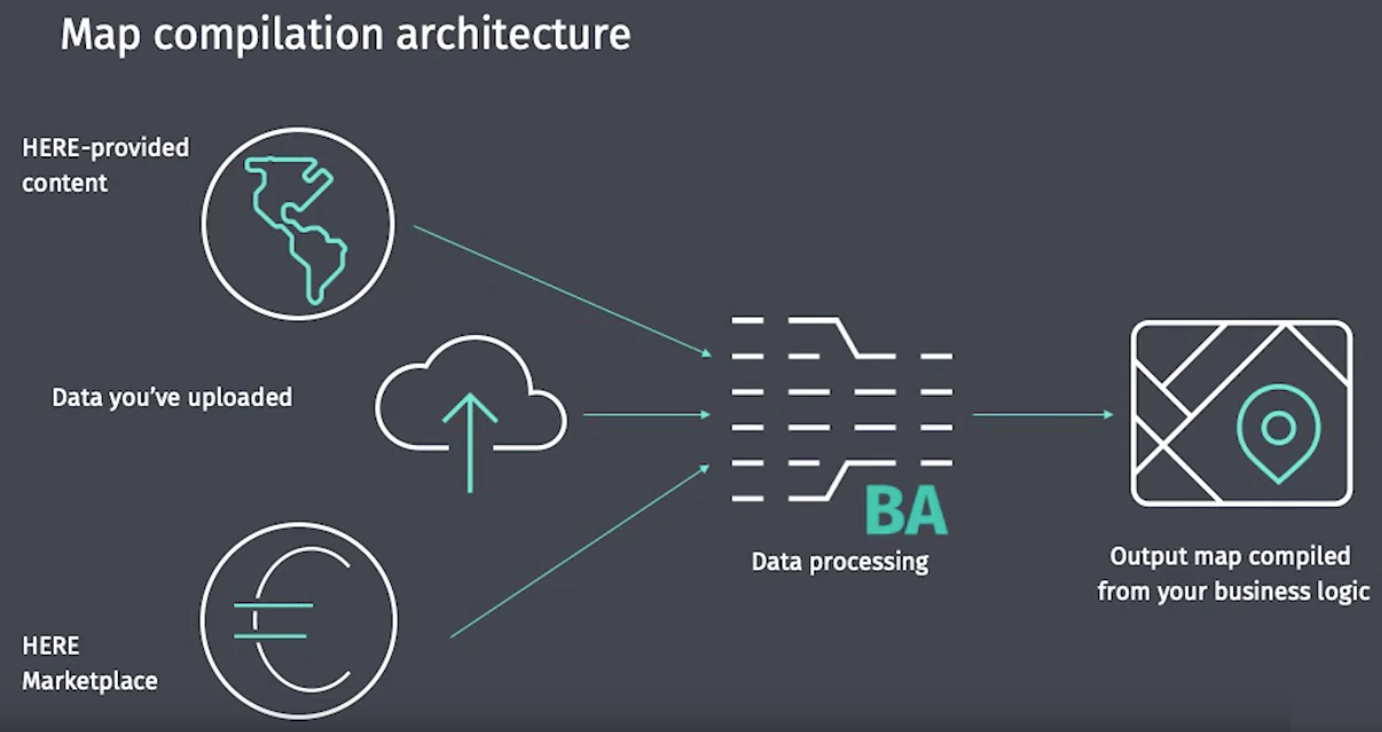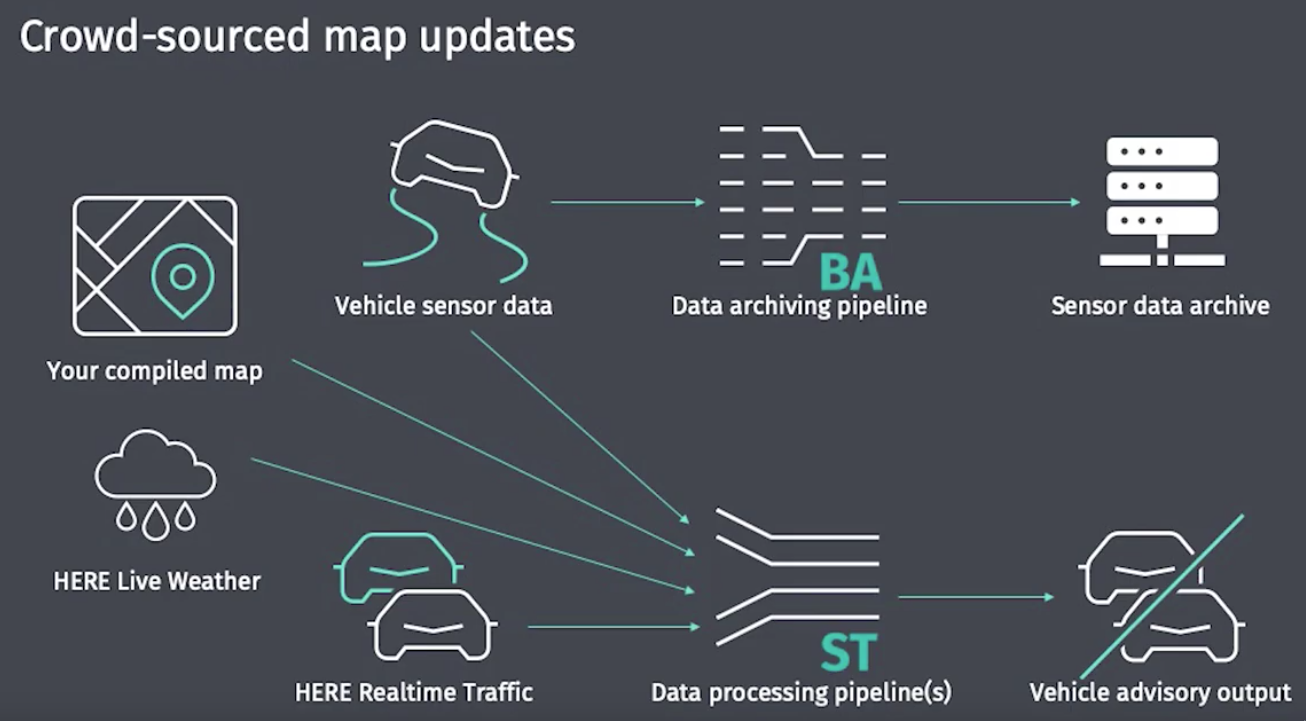- Products ProductsLocation Services
Solve complex location problems from geofencing to custom routing
PlatformCloud environments for location-centric solution development, data exchange and visualization
Tracking & PositioningFast and accurate tracking and positioning of people and devices, indoors or outdoors
APIs & SDKsEasy to use, scaleable and flexible tools to get going quickly
Developer EcosystemsAccess Location Services on your favorite developer platform ecosystem
- Documentation DocumentationOverview OverviewServices ServicesApplications ApplicationsDevelopment Enablers Development EnablersContent ContentHERE Studio HERE StudioHERE Workspace HERE WorkspaceHERE Marketplace HERE MarketplacePlatform Foundation and Policy Documents Platform Foundation and Policy Documents
- Pricing
- Resources ResourcesTutorials TutorialsExamples ExamplesBlog & Release Announcements Blog & Release AnnouncementsChangelog ChangelogDeveloper Newsletter Developer NewsletterKnowledge Base Knowledge BaseFeature List Feature ListSupport Plans Support PlansSystem Status System StatusLocation Services Coverage Information Location Services Coverage InformationSample Map Data for Students Sample Map Data for Students
- Help
Introduction
The HERE Workspace enables you to enrich and transform geospatial data such as sensor data or map data.
The following examples illustrate some high-level use cases.
- Process geospatial sensor data coming from mobile devices or vehicles
- Measure congestion on a road or around a point of interest (POI) based on probe data collected from GPS devices
- Update map data based on sensor data to correct attributes such as travel direction, the speed limit, or forbidden/allowed parking
- Provide hazard warnings in real time by sending alerts about incoming events
- Transform map data into different formats and indices, such as Navigation Data Standard (NDS) format maps
- Publish GPS data to others for further processing
To support these use cases, the HERE Workspace leverages batch and stream pipelines to transform data. The batch pipelines are built on the Apache Spark Framework, while the stream pipelines are built on the Apache Flink Framework. Batch pipelines run whenever a new version of an input data catalog is available to produce new or updated output. Stream pipelines run continuously.
To accomplish these uses and others, the HERE Workspace provides:
- A GUI for managing, exploring, and analyzing your data and data transformation processes (pipelines)
- A set of REST APIs for managing data, managing pipelines, and retrieving authentication tokens
- A HERE Data SDK for Java & Scala containing:
- A command-line interface (CLI) for managing data and pipelines
- Java and Scala libraries for managing data, creating batch and streaming pipelines
- Maven Archetypes for setting up basic project scaffolding
You can also use other HERE products in combination with the HERE Data SDK for Java & Scala to extend your capabilities. Specifically, you can use the Data Inspector Library to debug your pipeline applications by inspecting visualized output on top of the base map.
For more information, see the Data Inspector Library Developer Guide.
Common Use Cases
Two of the most common use cases for platform developers are:
- Map compilation
- Crowd sourced map updates
Map Compilation
The following lifecycle is an example of a typical use case:
- Compile various data sources into a single custom map for a designated use case.
- Browse available content. The standard definition map, traffic and weather are all available in HERE Workspace.
- Perform analysis on the data. Data analysts can use the Python SDK.
- Combine the data into a single product. The architecture typically consists of data you want to integrate into the map compilation and placeholders for the outcome of your map compilation. See the following illustration:

- Build a data pipeline to connect the input data sources with the output product. In the pipeline, you can apply business logic and selection criteria.
- You can use the HERE Data Processing Library (DPL) to incrementally compile your map when new versions of your source data are released. You do not need to write code to monitor your input sources or filter out old data.
Crowd-Sourced Map Updates
The following lifecycle builds on the Map Compilation example:
- Start by determining the underlying map structure you want to overlay with your data.
-
Define data sources for the updates. This can consist of weather, traffic, or your own sensor data. See the following illustration:

-
In a real time scenario, you can use streaming pipelines.
- You can monetize your map in HERE Marketplace.
For the terms and conditions covering this documentation, as well as about how is committed to respecting your privacy and to complying with applicable data protection and privacy laws, see the HERE Privacy Policy.
For more information on data security and durability best practices, see the Data API.